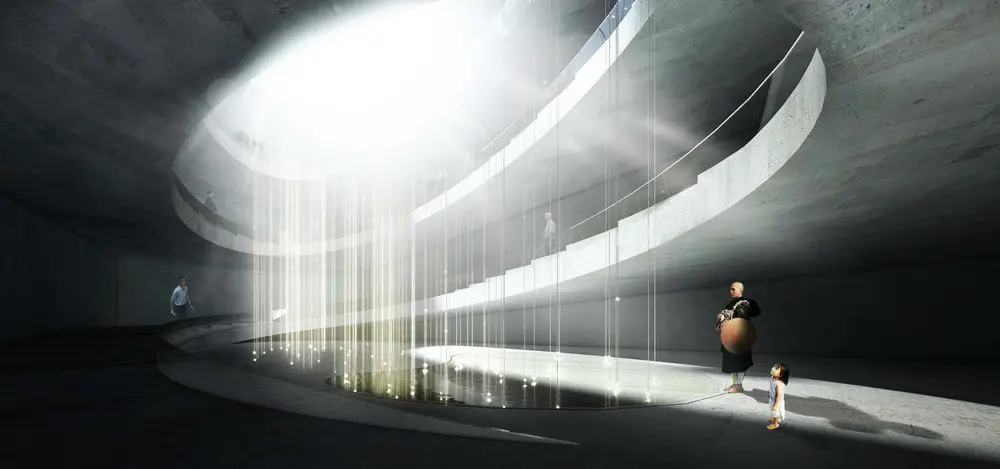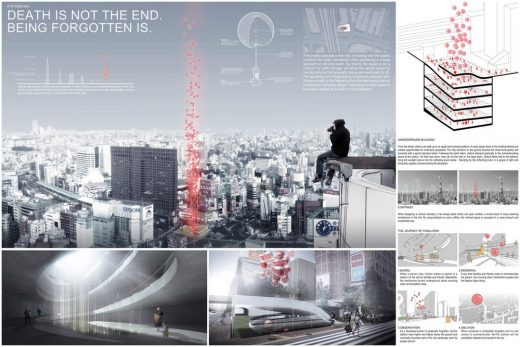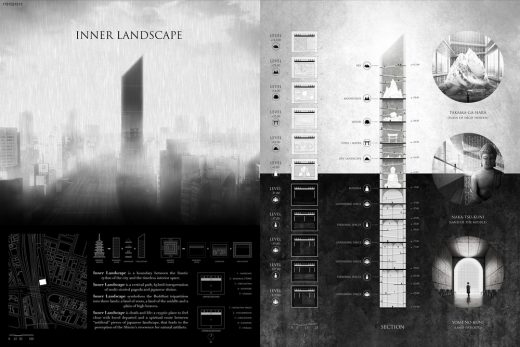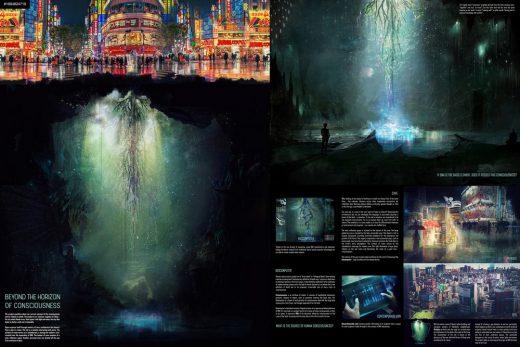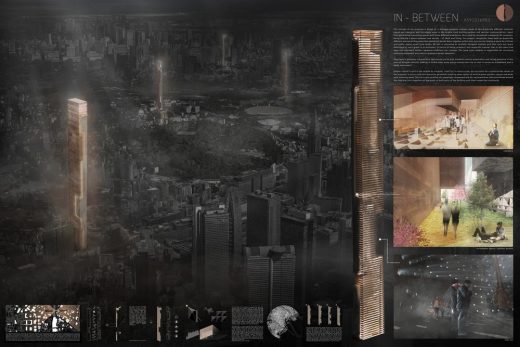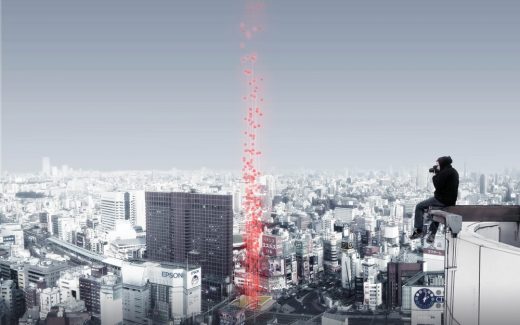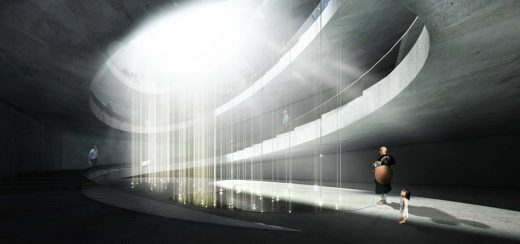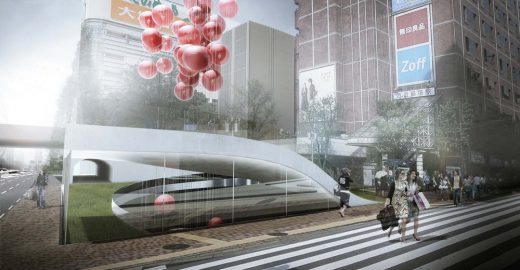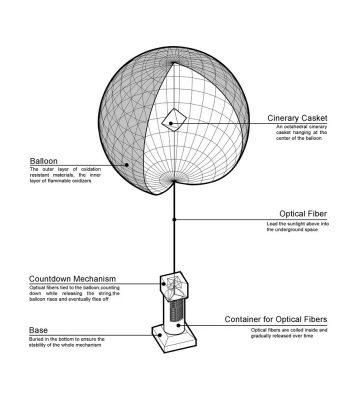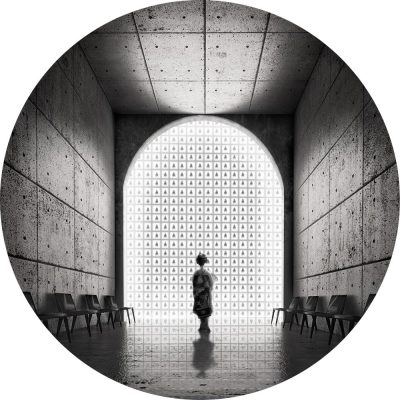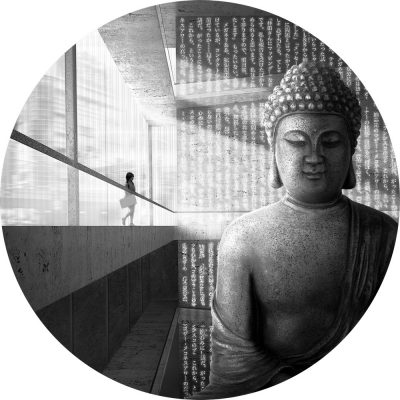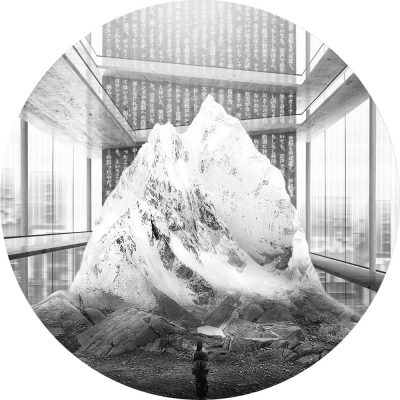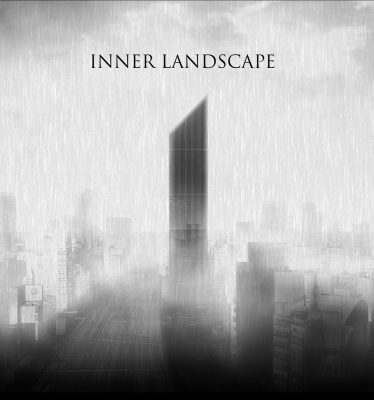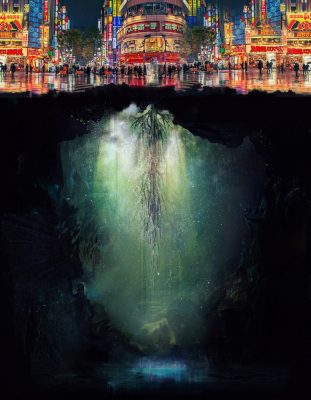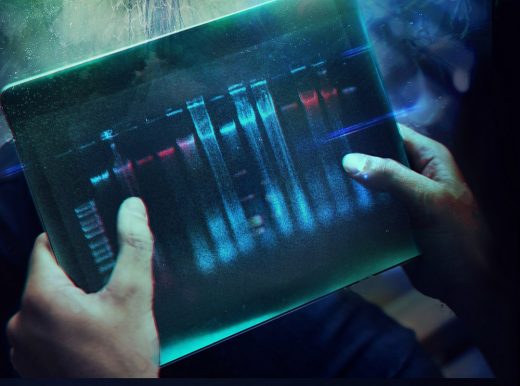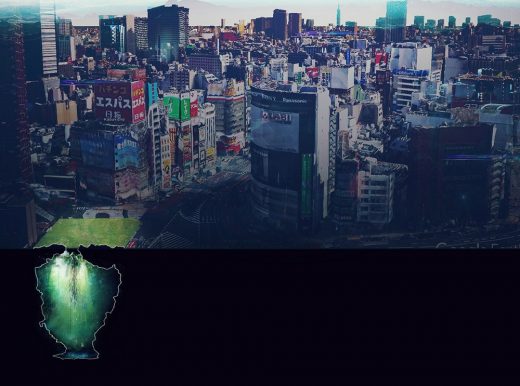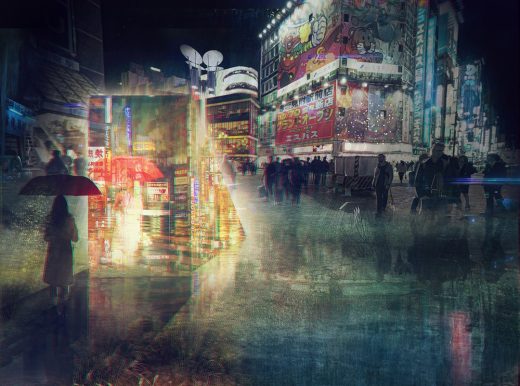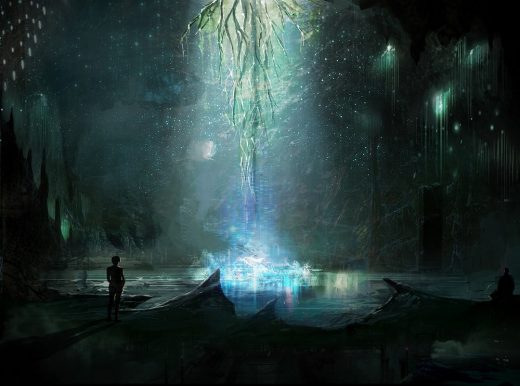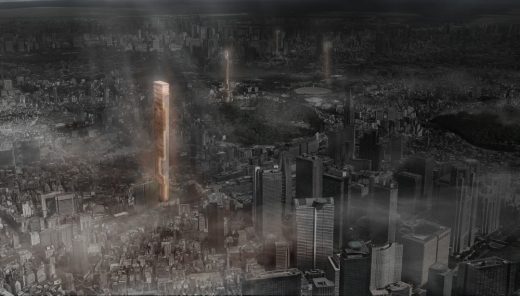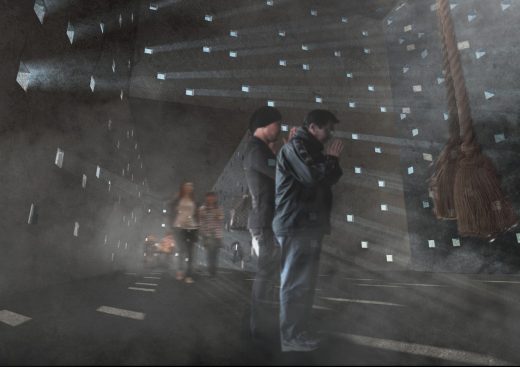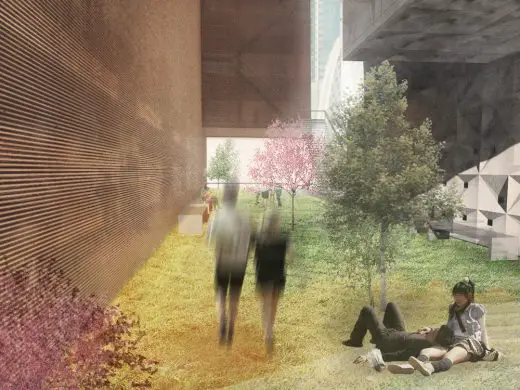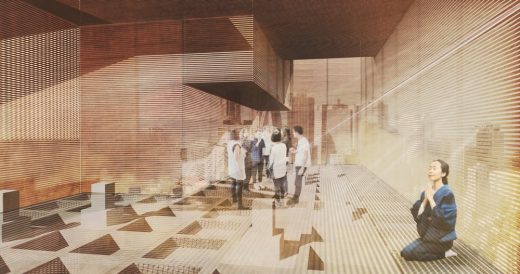Tokyo Vertical Cemetery Competition, Japanese Design Contest in 2016, News
Tokyo Vertical Cemetery Competition
International Architecture Contest by arch out loud set in Japan
25 Oct 2016
Tokyo Vertical Cemetery Competition Winners
Tokyo Vertical Cemetery Design Contest
By: architecture research initiative arch out loud.
Results of latest international open ideas competition, the Tokyo Vertical Cemetery.
The competition received 460 entries representing 54 countries and was judged by architects and educators such as David Adjaye, Tom Wiscombe, and Liam Young.
FINAL RESULTS
FIRST PLACE
DEATH IS NOT THE END. BEING FORGOTTEN IS.
WEI LI HE, WU JING TING ZENG, ZHI RUO MA, KUI YU GONG
This project explores a new way of dealing with the spatial constrain for urban cemeteries while expressing a unique approach to life and death. By having the balloons as a medium for coffin storage, we utilize the vertical space by having balloons that gradually rise up and eventually fly off. The appearing and disappearing of balloons resonate with the temporality of life. Departing from the depressing silence in traditional cemetery design, we propose a new space of tranquility created by a tower of rising balloons.
RUNNER-UP #1
INNER LANDSCAPE
NICCOLÒ BROVELLI
Inner Landscape is a boundary between the frantic rhythm of the city and the timeless interior space.
Inner Landscape is a vertical path, hybrid interpretation of multi-storied pagoda and Japanese shrine.
Inner Landscape symbolizes the Buddhist tripartition into three lands: a land of roots, a land of the middle and a plain of high heaven.
Inner Landscape is death and life: a cryptic place to feel close with loved departed and a spiritual route between “artificial” pieces of Japanese landscape, that leads to the perception of the Shinto’s reverence for natural artifacts.
RUNNER-UP #2
BEYOND THE HORIZON OF CONSCIOUSNESS
ANNA ECKES, OLAF MITKA
BEYOND THE HORIZON OF CONSCIOUSNESS questions about our current concept of the consciousness and its relation to death. The project is an ‘uncanny’ negation of Tokyo – the city which floods every ‘dark space’ with light and noise, the city that leads to shatter myth and irrationality. Space express itself through mimicry of cave, architecture that doesn’t have a plan or rooms. The site is a meadow interacting with users. The surface of rocks serves as a columbarium, a storage for modern ‘urns’ created from the separation of DNA. The bottom of cave consists of a main reflection space. Smaller, personal ones are located all the way from entrance to lake.
RUNNER-UP #3
IN-BETWEEN
MOISES ROYO MARQUEZ, CARLOS ORBEA MARTINEZ, GONZALO GARCIA-ROBLEDO, PIOTR PANCZYK
The concept is based on a dialogue between volumes made of two drastically different materials and the empty space in the middle. Apart from generating interesting spaces with three different ambiances, this could be considered a metaphor for cemetery, a place between two worlds: dead and living. Our project recognizes them both as different and bonds them together within one structure by finding a place for utilities and public spaces. All this is concealed in modular grid that sorts out space dedicated for each grave in an economic and respectful manner that does not contradict neither Japanese traditions nor customs.
Tokyo Vertical Cemetery Competition Winning Designs
Tokyo Vertical Cemetery Designs in More Detail
The End of Life is not Death, Being Forgotten Is
When designing a vertical cemetery in response to the challenge of limited space in the city, we believe that the cemetery can be something more than simply stacking in the vertical direction. There exists a more sustainable way to store coffins, to remember the dead, and to express a new way of looking at life and death.
Our design concept is based on a motto – the end of life is not death; being forgotten is. In our design, we employ balloons as a media for commemorating the dead. The coffin for a deceased person is a two-meter-diameter helium balloon. Ashes were stored in an octahedral box at the center of the balloon, which is made of bio-degradable materials. Both the interior and the exterior of a balloon is coated first with regenerative thermal oxidizer and then covered with oxidation resistant materials. The balloon is tied to the ground by optical fibers with a countdown winch underground.
Every time a person’s ashes are put in a balloon, the winch starts counting down. At the same time, the balloon begins to rise. Whenever friends and families come to visit, the balloon pauses. If no visitor comes, the balloon keeps rising. The oxidation resistant coating protects the balloon from being weathered and allows it to stay floating in the open air. Eventually, when the optical fibers reach the end, the balloon flies to the sky until blowing off in the atmosphere. While traveling back from the atmosphere, the inner layer of oxidizer coating will ignite the whole balloon in the sky. With the rain and the wind, the ashes travels back to the earth.
As a balloon rises, a person is gradually being forgotten by the rest of the world. When the balloon finally flies to the sky, it means the person is fully buried into history. The rising process is a farewell ritual to the deceased. As balloons travel into the sky, the whole city participates in the commemoration of the deceased. The rising balloons not only remember the deceased but also remind the living, “In the long river of life, have you forgotten someone?”
Undoubtedly, as time goes by, some people will be forgotten. Also, new ashes will be placed in the balloons. As the balloons rise one after another, the challenge of cemetery space has received a sustainable answer. Here, the course of life is represented by the rising balloons: unceasingly, lives come and go.
Comparing to the heavy-hearted monuments, the lissome balloons represent a more peaceful relationship with death. The transient tower formed by the balloons is more conspicuous than any other building in the city skyline. For pedestrians walking on the streets, the balloons cast shades and shelter rain above their heads.
From the street, visitors can walk up to an upper-level viewing platform. A ramp slopes down to the building behind and creates opportunities for multi-layer green spaces. The hilly structure on the ground touches the street level gently and connects with a spiral staircase below. Following the spiral stairs, visitors descend gradually to the commemorating space at the bottom. On their way down, they can sit and rest on the large steps. Optical fibers tied to the balloons bring the sunlight above into the reflecting pond below. Standing by the reflecting pond, in a space of light and tranquility, people commemorating the deceased.
This project explores a new way of dealing with the spatial constraint for urban cemeteries while expressing a unique approach to life and death. By having the balloons as a medium for coffin storage, we utilize the vertical space by having balloons that gradually rise up and eventually fly off. The appearing and disappearing of balloons resonate with the temporality of life. Departing from the depressing silence in traditional cemetery design, we propose a new space of tranquility created by a tower of rising balloons.
RUNNER-UP #1
INNER LANDSCAPE
NICCOLÒ BROVELLI
RUNNER-UP #2
BEYOND THE HORIZON OF CONSCIOUSNESS
ANNA ECKES, OLAF MITKA
RUNNER-UP #3
IN-BETWEEN
MOISES ROYO MARQUEZ, CARLOS ORBEA MARTINEZ, GONZALO GARCIA-ROBLEDO, PIOTR PANCZYK
All of the competition winners along with jury statements and the competition brief can be found here:
Tokyo Vertical Cemetery Competition Winners
Tokyo Vertical Cemetery Competition information / images received 251016
Location: Tokyo, Japan, eastern Asia
Japanese Buildings
Japanese Architecture Designs – chronological list
Architects: Hiramoto Design Studio
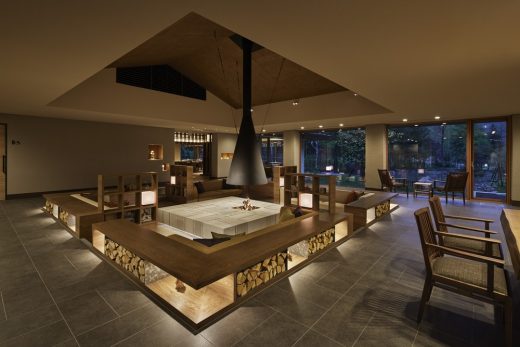
photography: Koji Fujii / Nacása&Partners Inc
Kasho Gyoen Hotel in Hokkaido
TBWAHakuhodo offices
Klein Dytham architecture
Tokyo Offices
Prada Store
Herzog and de Meuron
Prada Tokyo
Ark, Tokyo
Design: Apollo architects & associates
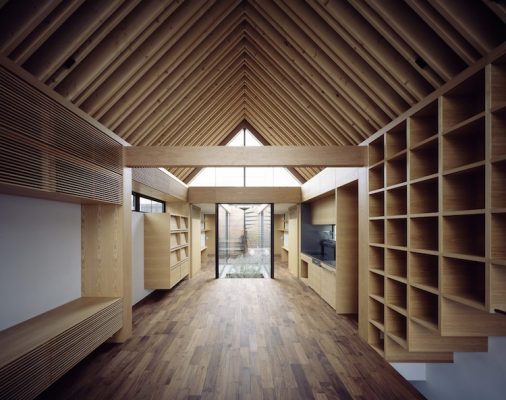
photo : Masao Nishikawa
New Home in Tokyo
Industrial Designer House
Koji Tsutsui
Tokyo Home
Building Competitions : Archive
Comments / photos for the Tokyo Vertical Cemetery Competition page welcome

